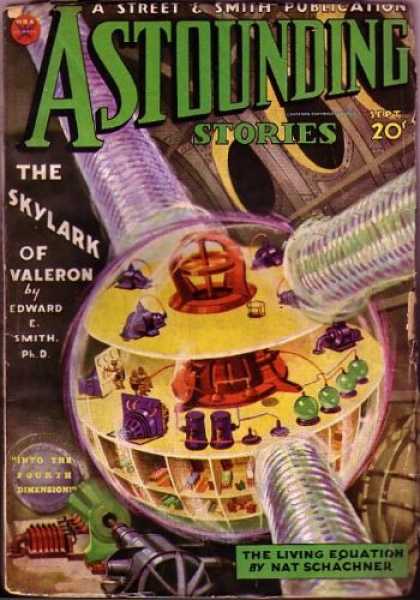|
LITR 4632: Literature of the Future |
Final Exam Essays 2013 Sample answers
for Essay 1:
|
 |
Tina Le
A False Future
As the course came to an end, our science fiction journey did
not give any signs of slowing down. Diving further into scenarios of the future
we explored different possibilities of what may await us in the future, and the
outcomes they yielded. Focusing on the cyberpunk genre of the high–tech reality
to the low-tech stories there is a common theme associated within the characters
and the society that they live in. An increase of the inorganic and the loss of
human nature seem to be prevalent in a number of different ways.
William Gibson’s
Johnny Mnemonic
may be the most cyberpunk and high-tech story we have discussed in class. It is
a dark, entertaining and visually appealing story that is full of edgy
descriptions of body modifications and enhancements that take away from the
natural human state and form. Johnny is the protagonist and in the story his
clients store valuable data into his brain that only they can access with a
passcode, “The
stored data are fed in through a modified series of
microsurgical
contra-autism prostheses…there’s no way to recover
your phrase. Can’t drug it out, cut it out, torture it. I don’t
know it, never did.” Johnny
becomes an item to be destroyed because he holds an important program that the
Yakuza gang wants, and they send an assassin to kill him. Along his side is
Molly Minions modified to be a walking weapon just like the Japanese assassin.
They both have changes to their hands, the assassin with a killer thumb and
Molly with “ten
blades snicked straight out from their recesses beneath her nails, each one a
narrow, double-edged scalpel in pale blue steel.” With these modifications
Johnny and Molly are made to be what they are rather than being who they are.
Another example of the high-tech future being a product of
the inorganic is seen in
Drapes and Folds. In a
society that was riddled by the “Women’s Epidemic of 2022” there was a deep
decline in natural births. To fix the problem the NewSociety came up with
“NewOnes, citizens farmed after the year 2025, [that] were a ghastly mix of
human and roboid.” We find out later that women could have “mail ordered from
Petrie’s Dish or used one of those Grow Your Own home-creation kits.” Pearl the
main character, did not chose those options and became pregnant a more natural
way, but when her daughter Casey turned forty “her hormones exploded and the
Farmers promised [Casey] ‘A NewOne with all modern conveniences plus the
familiarity of inherited traits.’” This is how they got Xera, Pearl’s
granddaughter. However, even though this story is high-tech with the half human
half robots and inorganic creations, it has a low-tech quality to it. Xera calls
her grandmother’s decision to have a natural birth “Primitive” and in this
chaotic world that they live in, there is still a sense of warmth that is found
at the end of the story when Xera’s human qualities emerge from her robotic
form.
It is not always the very high-tech science fiction
stories that show the lack of human nature in scenarios of the future. Low-tech
stories have a shift from technology and its progression back to the organic and
nostalgic sense of remembering what is most important that is now forgotten. A
great example of this is seen in
The Onion and I, a
somewhat coming of age story where a father and son are assigned a task of
creating an onion in their Cyberworld called Bidwell. Their goal is to create a
cyber onion that can match the real sensations of a real onion. However, his
father shows him that there is a difference between the cyber onion and the real
onion, no matter how hard Bidwell tries to convince him that there is not. He
makes his son touch, feel and taste one of his real onions and in the ends tells
him “if you try to remove the layers, you would destroy the life that awaits us
here, the life that makes you and me” and finishes by telling his son that real
onions grow from onion seeds “programmed by nothing more than he earth itself.”
The lack of real sensations in a virtual world is another way of how the
inorganic takes away from the human nature.
It is always interesting to see where science fiction authors will take us when
writing stories about the future, whether they lead to dramatic body
modifications, a creation of a new species, or the loss of our organic human
nature through a virtual reality. There are also many different possibilities of
what may happen to us but the future seems to sway towards the inorganic
progression of our world. We can either adapt or resist the technological
advances that may eventually change us.
